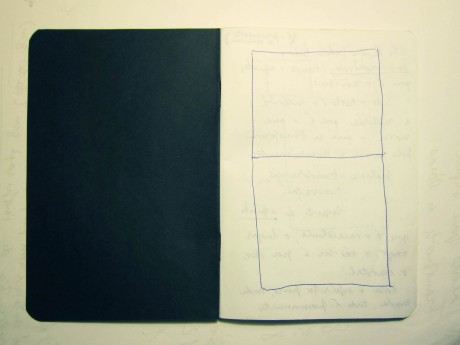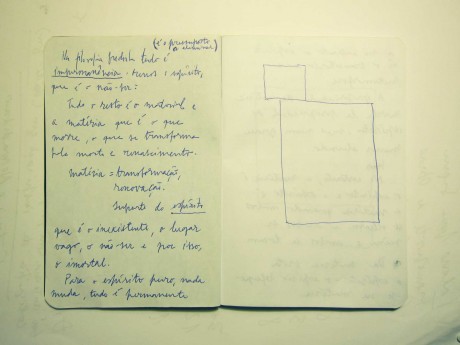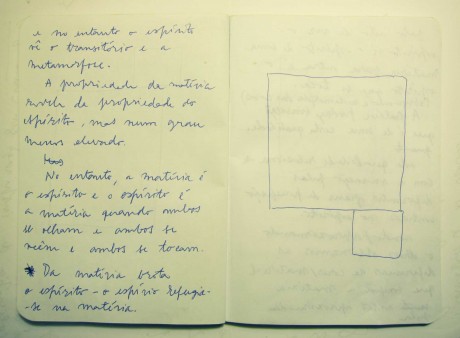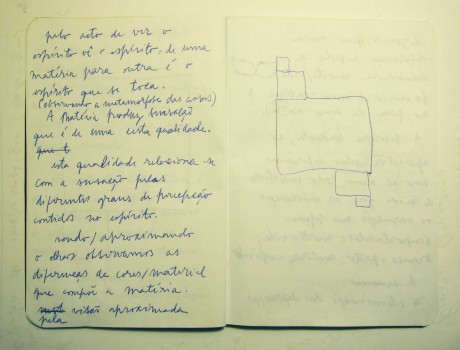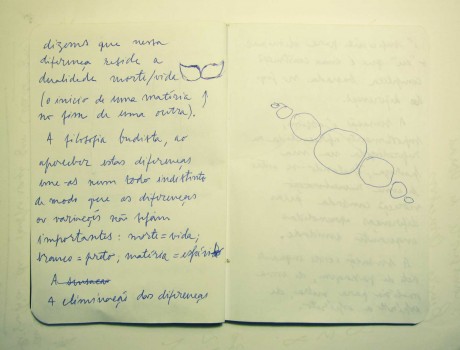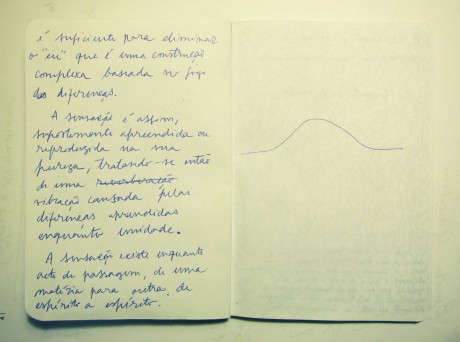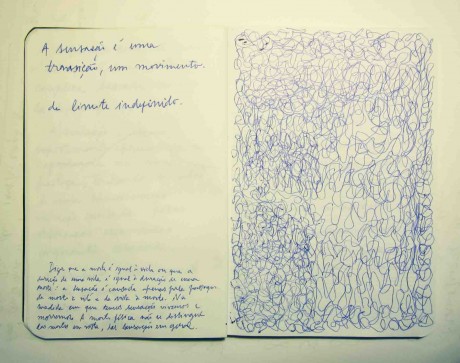MATÉRIA E BUDISMO
Na filosofia budista tudo é impermanência (é o pressuposto a eliminar). Menos o espírito, que é o não-ser:
Tudo o resto é o material e a matéria é o que morre, o que se transforma pela morte e renascimento.
matéria = transformação / renovação / suporte do espírito
que é o inexistente, o lugar vago, o não-ser e por isso, o imortal.
Para o espírito puro nada muda, tudo é permanente e no entanto o espírito vê o transitório e a metamorfose.
A propriedade da matéria revela da propriedade do espírito, mas num grau menos elevado.
No entanto, a matéria é o espírito e o espírito é a matéria quando ambos se olham e ambos se veem e ambos se tocam.
Da matéria brota o espírito – o espírito refugia-se na matéria.
Pelo acto de ver, o espírito vê o espírito: de uma matéria para a outra é o espírito que se toca (observando a metamorfose das coisas).
A matéria produz sensação que é de uma certa qualidade. Esta qualidade relaciona-se com a sensação pelos diferentes graus de percepção contidos no espírito.
Vendo / aproximando o olhar observamos as diferenças de cores / material que compõe a matéria: pela visão aproximada dizemos que nessa diferença reside a dualidade morte / vida (o início de uma matéria no fim de outra).
A filosofia budista, ao aperceber estas diferenças, une-as num todo indistinto de modo que as diferenças ou variações não sejam importantes: morte=vida; branco=preto; matéria=espírito.
A eliminação das diferenças é suficiente para eliminar o “eu” que é uma construção complexa baseada no jogo das diferenças.
A sensação é assim supostamente apreendida ou reproduzida na sua pureza, tratando-se então de uma vibração causada pelas diferenças apreendidas enquanto unidade.
A sensação existe enquanto acto de passagem de uma matéria para a outra, de espírito a espírito.
A sensação é uma transição, um movimento
de limite indefinido.
J.V.
««««»»»»
BUDDHISM AND MATTER
In the Buddhist philosophy everything is impermanence (that is the assumption to do away with). Except the spirit, which is the non-being:
Everything else is material and matter is that which dies, that which is transformed by death and rebirth.
matter = transformation / renovation / support of the spirit
which is the inexistent, the vague place, non-being and, therefore, the immortal.
To the pure spirit nothing changes, everything is permanent but, nevertheless, the spirit sees the transitory and metamorphose.
The property of matter reveals the property of the spirit, but in a lesser degree.
However, matter is the spirit and spirit is the matter when they both look at each other and see each other and touch each other.
From matter the spirit is born – the spirit takes shelter in matter.
By the act of seeing, the spirit sees the spirit: from one matter to another it is the spirit touching itself (observing the metamorphosis of things).
Matter produces sensation of a given quality. This quality is related to the sensation by the different levels of perception contained in the spirit.
Seeing / approximating the sight we observe the difference of colors / material that composes matter: by approximated sight we say that in that difference resides the life / death duality (the beginning of a matter at the end of another).
By perceiving these differences, the Buddhist philosophy unites them in an indistinct whole in a way that the differences and the variations are not important: death=life; white=black; matter=spirit.
The elimination of differences is enough to eliminate the “I” which is a complex construction based in the game of differences.
The sensation is, in this way, supposedly, apprehended or reproduced in its purity, being a vibration caused by the differences apprehended as unity.
The sensation exists as an act of passing from one matter to another, from spirit to spirit.
Sensation is a transition, a movement
of undefined limit.
J.V.
